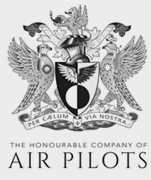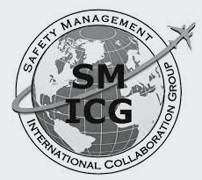B738 / SF50, vicinity Palma Spain, 2022
B738 / SF50, vicinity Palma Spain, 2022
Summary
On 28 May 2022, the crew of a Boeing 737-800 which had just taken off from Palma in good daylight visibility observed a light aircraft approaching from the right at high speed on a collision course and immediately initiated evasive action, achieving a minimum separation subsequently found to have been 116 feet vertically and 1,200 metres laterally and passing behind it. ATC radar showed that the other aircraft had not taken any action and it was found to have been operating on a VFR flight plan in controlled airspace without complying with the requirements for such access or listening out.
Flight Details
Aircraft
Operator
Type of Flight
Public Transport (Passenger)
Flight Origin
Intended Destination
Take-off Commenced
Yes
Flight Airborne
Yes
Flight Completed
Yes
Phase of Flight
Climb
Flight Details
Aircraft
Operator
Type of Flight
Private
Flight Origin
Intended Destination
Take-off Commenced
Yes
Flight Airborne
Yes
Flight Completed
Yes
Phase of Flight
Climb
Location - Airport
Airport
General
Tag(s)
Aircraft-aircraft near miss,
PIC less than 500 hours in Command on Type,
Deficient Pilot Knowledge,
PIC aged 60 or over
AI
Tag(s)
CA Incursion,
Aircraft not in contact with Airspace ATC
HF
Tag(s)
Inappropriate crew response - skills deficiency,
Manual Handling,
Procedural non compliance,
Violation
LOS
Tag(s)
Required Separation not maintained,
Near Miss,
VFR Aircraft Involved
Outcome
Damage or injury
No
Non-aircraft damage
No
Non-occupant Casualties
No
Off Airport Landing
No
Ditching
No
Causal Factor Group(s)
Group(s)
Aircraft Operation
Safety Recommendation(s)
Group(s)
None Made
Investigation Type
Type
Independent
Description
On 28 May 2022, a Boeing 737-800 (EI-EKR) being operated by Ryanair on a scheduled international passenger flight from Palma to Manchester as RYR1U and a Cirrus SF50 (N66HR) being flown by a private pilot with no passengers on board which was en route from nearby Son Bonet to Ibiza came into close proximity in day VMC. On sighting the other aircraft seconds after becoming airborne, the 737 crew immediately commenced avoiding action whilst continuing their climb and achieved 1,200 metres lateral and 116 feet vertical separation whilst the other aircraft took no action. The light aircraft had been seen on radar but had failed to communicate with Palma ATC or listen out.
Investigation
An Investigation was carried out by the Spanish Commission for the Investigation of Accidents and Incidents (CIAIAC) using QAR data provided by the 737 operator, ATC and radar and communications recordings and a recording of communications with the light aircraft on the Palma Airport Operations frequency (not part of ATC).
The 35 year-old 737 Captain had a total of 6,400 hours flying experience of which 4,300 hours were on type and their 26 year-old First Officer had a total of 809 hours flying experience of which 573 hours were on type.
The 67 year-old German national flying the US-registered SF50 reported that he had a total of 1,500 hours flying experience with 108 hours on type. This experience record was not checked against any more potentially reliable source. He was doing so on the basis of a licence issued by the FAA - a ‘Temporary Airman’s Certificate’ (TAC) which included the required endorsement necessary to fly a turbine engined type such as the SF50. However, it was found that this licence had not been issued until after the date of the event under investigation and was therefore invalid. It was noted that a TAC is issued by the FAA on the basis of a pilot licence issued by a foreign authority, in this case the German LBA and carries over all limitations and restrictions which were applied by the original issuing agency. In this case, the endorsements included an IR and Level 4 English Language proficiency and Level 6 German Language proficiency.
The Palma 24R TWR controller was appropriately licensed with endorsements for TWR, GND and Aerodrome Radar positions and as an OJTI and held a Level 5 English Language proficiency certification.
The Airspace Context
The SF50 aircraft involved had taken off from runway 23 at the uncontrolled Son Bonet aerodrome which is located just outside the lower part of the Palma ATZ/CTR (Control Zone). This is Class ‘D’ airspace up to the lower of 1000 feet agl and the cloud ceiling so VFR flights are therefore permitted subject to being in radio contact with Palma ATC. Above those limits, the ATZ is Class ‘A’ airspace and also extends slightly to cover the Son Bonet overhead and in such airspace, VFR flights are not permitted to enter under any circumstances.

Son Bonet is north of Palma just outside the ATZ lowest sector but within it above that (the Blue boundary is the Class ‘D’ airspace Palma CTR). [Part of the Son Bonet visual approach chart included in the Official Report]
The AIP data published for Son Bonet Aerodrome includes the requirement that departing aircraft shall present FPLs to the Palma Airport Air Traffic Services Reporting Office (ARO) and that “all aircraft taking off from Son Bonet shall establish radio contact with Palma OPS to report their take-off time”. Pilots are also reminded to “take special care not to exceed the lower limit of the TMA and maintain separation from IFR traffic” and to familiarise themselves with the vertical limits of the Palma ATZ.
This AIP entry also states that “under no circumstances shall the CTR of Palma de Mallorca [see the illustration above, extends from SFC-1000 feet agl] or the final approach areas to the runways of Palma de Mallorca aerodrome be crossed without permission from ATC” and that “no flights shall be conducted in the ATZ of Palma de Mallorca without prior authorization from Palma TWR”. It adds that “When conducting a special flight at a height above 900 ft AGL is envisaged, this must be coordinated in advance with ATC to obtain the corresponding clearance”.
What Happened
The SF50 pilot had filed a hybrid ‘Z’ flight plan for his flight from Son Bonet to Ibiza with the first part of the route until waypoint TUKRO as VFR and the remainder to destination as IFR. After taking off from runway 23 at Son Bonet almost two minutes before the 737 became airborne from runway 24R at Palma, it immediately turned left and entered the Palma ATZ/CTR climbing through an altitude of 700 feet without making radio contact. As the SF50 appeared on the Palma radar display already at 1,100 feet and still climbing, the 737 was already on its takeoff roll. The controller on the 24R TWR frequency which was working the 737 called the SF50 twice but got no reply. As the 737 got airborne, the SF50 then turned to the right and established a track to TUKRO having reached 1,200 feet putting it well within Class ‘A’ airspace.
As the 737 became airborne, the TWR controller transmitted to the SF50 on 121.5 MHz but again received no response. The two aircraft were on converging tracks and the lateral separation between them began to decrease. The 737 crew then saw the SF50 on their right as they climbed and, twenty seconds after becoming airborne, they initiated an evasive manoeuvre to the right whilst continuing to climb and informed TWR of the situation. The controller responded by informing them that there was “an aircraft at 1000 feet in front of them, that they did not have it on frequency and that they did not know its intentions” and followed this with an instruction to change to the APP DEP frequency.
The evasive action by the 737 continued for 30 seconds as the SF50 held its course whilst descending to and maintaining 1,000 feet. The minimum separation between the two aircraft -1,200 metres laterally and 116 feet vertically - occurred 10 seconds into this manoeuvre as the SF50 crossed the extended centreline of the runway from which the 737 had just taken off. After this point, the 737 continued climbing and remained above the other aircraft as the distance between them began to increase. An annotated illustration of the conflicting tracks of the two aircraft is reproduced below.

The conflicting tracks annotated with separation distances as the 737 turned right whilst continuing to climb above the SF50. [Reproduced from the Official Report]
Whilst this was happening, the SF50 pilot who had taken off from Son Bonet stated that he had been listening out on the Palma Airport Operations (ARO) frequency (which is the ATS Reporting Office and not an ATC frequency) until called when he was told that his flight plan had been activated. He was then told repeatedly to call ATC and given the 24L TWR frequency but repeatedly failed to read it back correctly despite requesting and receiving repeats of it. By the time - over a minute later - the correct frequency was finally read back, the 737s evasive manoeuvre had been completed.
When the SF50 pilot finally checked in with the 24L TWR controller and was instructed to contact the APP, the same problem with failing to read back the new frequency correctly occurred again. When this was finally resolved, the flight was transferred to the APP radar frequency where the pilot was informed of the danger of the manoeuvre he had just performed and reminded of the requirement to make contact before entering Palma Airport controlled airspace and that the way he had done this was not permitted. This had to be reiterated before the pilot acknowledged receipt of the information and the controller then provided traffic information.
It was noted that the event did not produce a TCAS RA on board the 737 because RA annunciation is inhibited below 1,000 feet agl. It was also found that the pilot “had not been in possession of the rating required to operate the SF50 aircraft at the time of the event”.
Why It Happened
The actions and inactions of the SF50 pilot in respect of airspace infringement were clearly at the root of the conflict and the prompt and effective avoiding action by the 737 crew had been central to collision avoidance. The Investigation attempted to find further information from the SF50 pilot on various aspects of his flight through the Palma ATZ but received no response in respect of any information sought.
Despite the fact that a flight plan had been filed, it was concluded that SF50 pilot’s flight planning had been deficient, resulting in him being unaware of the environment in which he was operating. This lack of awareness of the operating environment was evidenced by:
- Unauthorised entry into the ATZ because the pilot was unaware of the requirement for prior clearance from Palma TWR for entry and operation within the Palma ATZ.
- Lack of knowledge in respect of the ATC units involved in his intended flight and their frequencies.
- Probable lack of knowledge in regard to the characteristics of the airspace of relevance to his flight planned trip.
It was also concluded that the pilot's linguistic competence, specifically in regard to his reduced ability to understand information and instructions received, was inadequate and had been contributory to his poor overall performance.
Overall, it was concluded that the conduct of the SF50 pilot revealed a lack of the knowledge and skills required to manage the essential functions of flight (flying, navigating and communicating) in an operating environment such as Palma de Mallorca International Airport and that he “was probably not qualified to perform a flight with these characteristics”.
The Cause of the loss of safe separation was determined to have been “the unauthorised presence of the N66HR aircraft within the Aerodrome Traffic Zone (ATZ) of Palma de Mallorca International Airport due to deficient flight planning”.
Four Contributory Factors were also formally recorded as follows:
- The lack of the knowledge and skills of the pilot of the aircraft N66HR to carry out a flight with the characteristics of the one involved in the event.
- The inadequate management of the perceived problem on board the N66HR aircraft due to poor decision-making.
- The fact that the pilot of the N66HR aircraft failed to comply with the VFR communications procedures in force within the Palma TMA by not communicating or listening in on the frequencies established within the Palma ATZ.
- The inadequate language proficiency exhibited by the pilot of the N66HR aircraft during the incident flight, as evidenced by the limited ability to understand the information and instructions (eventually) received.
The Final Report of the Investigation was approved on 25 October 2023 but only released online in both the definitive Spanish version and in an English translation on 5 February 2024. No Safety Recommendations were made.
Related Articles
- Loss of Separation
- Airspace Infringement
- Flight Plan
- Pre Flight Planning (toolkit)
- Pre-flight Preparation
- Classification of Airspace
- Violation
- Decision Making
- Radio Discipline
- English Language Proficiency Requirements
- Read-back or Hear-back
- Flight Crew Licensing
- Personnel Licensing
- Aerodrome Traffic Zone (ATZ)
- Terminal Control Area
- See and Avoid






